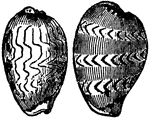Turritella Sanguinea (Reeve)
"Some other species, the names of which indicate a winding pyramid, have shells terminating in a sharp…
Turritella Goniostoma
"Some other species, the names of which indicate a winding pyramid, have shells terminating in a sharp…
Turritella Terebellata (Lamarck)
"Some other species, the names of which indicate a winding pyramid, have shells terminating in a sharp…
Cerithium Fasciatum (Brug.)
"There are some species which are chiefly found in the muddy bottoms, and more frequently at the mouths…

Cerithium Aluco.
"There are some species which are chiefly found in the muddy bottoms, and more frequently at the mouths…
Cerithium Giganteum (Lamarck)
"There are some species which are chiefly found in the muddy bottoms, and more frequently at the mouths…
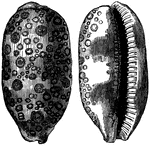
Cypraea Argus (Linn.)
"The Cowries are found at a little distance from the shore, generally in clefts of the rocky bottoms;…

Cypraea Tigris (Linnaeus)
"The animal which inhabits these shells is elongated, and is provided with a well-developed mantle,…

Cypraea Moneta (Linnaeus)
"The Money Cowry is a little, oval shell, depressed, flat below, with very thick edges and slightly…
!["The Madagascar Cowry [is] beautifully marked, having the general appearance of being mammillated all over."](https://etc.usf.edu/clipart/51500/51521/51521_cypra_madaga_mth.gif)
Cypraea Madagascariensis (Gmel.)
"The Madagascar Cowry [is] beautifully marked, having the general appearance of being mammillated all…
!["The Granular Cowry [is] beautifully marked, having the general appearance of being mammillated all over."](https://etc.usf.edu/clipart/51500/51525/51525_cypra_nucleu_mth.gif)
Cypraea Nucleus (Linnaeus)
"The Granular Cowry [is] beautifully marked, having the general appearance of being mammillated all…
Mitra Episcopalis (Lamarck)
"The Episcopal Miter, from the Indian ocean is white, ornamented with square spots of a fine red, and…

Mitra Papalis (Lamarck)
"The Papal Miter has dentiform folds around the opening, which also crown each turn of the spiral. It…

Oliva Erythrostoma (Lamarck)
"The genus Oliva is so named from its resemblance in form to the olive. They are flesh-eaters."

Oliva Porphyria (Lamarck)
"The genus Oliva is so named from its resemblance in form to the olive. They are flesh-eaters."

Oliva Peruviana (Lamarck)
"The genus Oliva is so named from its resemblance in form to the olive. They are flesh-eaters."
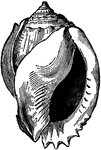
Cassis Glauca (Linnaeus)
"In the genus Cassis the shell is oval, convex, and the spire is not of considerable height.…
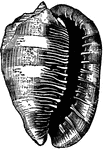
Cassis Rula (Linnaeus)
"In the genus Cassis the shell is oval, convex, and the spire is not of considerable height.…
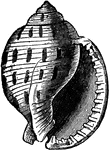
Cassis Canaliculata (Brugieres)
"In the genus Cassis the shell is oval, convex, and the spire is not of considerable height.…
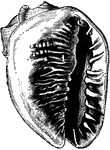
Cassis Madagascariensis (Lamarck)
"In the genus Cassis the shell is oval, convex, and the spire is not of considerable height.…

Cassis Madagascariensis (Lamarck)
"In the genus Cassis the shell is oval, convex, and the spire is not of considerable height.…

Cassis Zebra (Lamarck)
"In the genus Cassis the shell is oval, convex, and the spire is not of considerable height.…
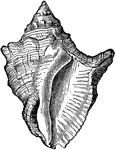
Purpura Consul.
"The Purpuras have a classical name and history, having furnished the Greeks and Romans with the brilliant…

Buccinum Senticosum (Linnaeus)
"The Purpuras have a classical name and history, having furnished the Greeks and Romans with the brilliant…
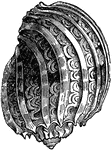
Harpa Ventricosa (Linnaeus)
"The genus Harpa contains shells from the Indian ocean, richly enameled within and ornamented…

Murex Haustellum (Linnaeus)
"The genus Murex, or Rock Shells, includes a large number of species, all remarkable for their…

Murex Tenuispina (Lamarck)
"The genus Murex, or Rock Shells, includes a large number of species, all remarkable for their…

Murex Scorpio (Linnaeus)
"The genus Murex, or Rock Shells, includes a large number of species, all remarkable for their…
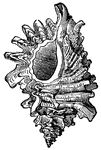
Murex Erinaceus (Linnaeus)
"The genus Murex, or Rock Shells, includes a large number of species, all remarkable for their…

Triton Iotorium (Linnaeus)
"The genus Triton is classed next to the genus Murex. The shell is irregularly covered…

Voluta Undulata (Lamarck)
"The Volutes live in the sands near the shore; sometimes they are found high and dry, left by the retreating…

Voluta Cymbium (Linnaeus)
"The Volutes live in the sands near the shore; sometimes they are found high and dry, left by the retreating…

Voluta Delessertii (Petit)
"The Volutes live in the sands near the shore; sometimes they are found high and dry, left by the retreating…

Voluta Musica (Linn.)
"The Volutes live in the sands near the shore; sometimes they are found high and dry, left by the retreating…

Voluta Imperialis (Lamarck)
"The Volutes live in the sands near the shore; sometimes they are found high and dry, left by the retreating…

Voluta Scapha (Gmel.)
"The Volutes live in the sands near the shore; sometimes they are found high and dry, left by the retreating…

Voluta Vexillum (Chem.)
"The Volutes live in the sands near the shore; sometimes they are found high and dry, left by the retreating…

Conus Tescallatus (Born.)
"The genus Conus is especially rich in species, as well as numerous individuals. This group…

Conus Nobilis (Linn.)
"The genus Conus is especially rich in species, as well as numerous individuals. This group…

Conus Gloria Maris (Chemn.)
"The genus Conus is especially rich in species, as well as numerous individuals. This group…

Conus Textilis (Linn.)
"The genus Conus is especially rich in species, as well as numerous individuals. This group…

Triton Anus (Lamarck)
"The genus Triton is classed next to the genus Murex. The shell is irregularly covered…

Strombus Gigas (Linnaeus), with the animal
"The Strombus is a peculiar genus, belonging to the equatorial seas. Some of these attain great…
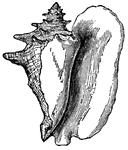
Shell of Strombus Gigas
"The Strombus is a peculiar genus, belonging to the equatorial seas. Some of these attain great…
!["The Angel-winged is shown [here]. It is veined with stripes of white and red, and comes from the coasts of Asia and America."](https://etc.usf.edu/clipart/51600/51610/51610_strom_gallus_mth.gif)
Strombus Gallus (Linn.)
"The Angel-winged is shown [here]. It is veined with stripes of white and red, and comes from the coasts…
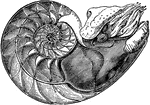
Nautilus Pompilius (Linnaeus), showing the interior of the lower cell, to which the animal is fixed.
"In the last partition of the shell is the animal, covered by its mantle, which lines to walls of the…

Argonauta Papyracea in its Shell
"The argonaut can blush, turn pale, and show through its transparent shell its body changing in sudden…
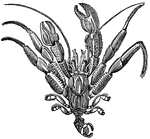
Pagurus Bernhardus, Out of the Shell
"The Hermit or Soldier Crab is perhaps the oddest and most curious of the Crustaceans." Hermit Crabs…
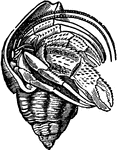
Pagurus Bernhardus, In the Shell
"The Hermit or Soldier Crab is perhaps the oddest and most curious of the Crustaceans." Hermit Crabs…

Hawk's-Bill Turtle
"Much of the tortoise-shell of commerce comes from the Green Turtle, but by far the finest is produced…

Leatherback Turtle
"It attains a length of six to eight feet and a breadth of about one fifth of the length; it sometimes…
